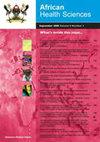通往无脊髓灰质炎乌干达之路;乌干达病毒研究所扩大免疫规划实验室(EPI-LAB)的贡献
IF 0.9
4区 医学
Q3 MEDICINE, GENERAL & INTERNAL
引用次数: 0
摘要
背景:乌干达对脊髓灰质炎的控制可追溯到1950年,急性弛缓性麻痹(AFP)监测自此被用作鉴定野生脊髓灰质炎病毒的标准。脊髓灰质炎病毒分离最初是通过合作研究进行的,然而,1993年,扩大免疫规划实验室(EPI-LAB)作为全球脊髓灰质炎病毒实验室网络(GPLN)的成员成立,并在乌干达病毒研究所率先开展了这项活动。目标:本报告的目的是记录EPI-LAB在乌干达消灭脊髓灰质炎病毒方面的进展和影响。方法:采用实时逆转录聚合酶链式反应(rRT PCR)技术对脊髓灰质炎病毒进行组织培养和型内分化,从根本上实现脊髓灰质炎病毒的检测鉴定。数据录入国家AFP数据库,使用EpiInfoTM统计软件进行分析。 结果:野生型和沙宾型脊髓灰质炎病毒的定量和定性检测与脊髓灰质炎运动一致。在整个研究期间,基本上实现了世卫组织AFP监测的目标指标。结论:病毒学追踪与AFP标准监测指标的实现是实现和维持全国无野生脊灰状态的关键。实验室监测仍然是通报消灭脊髓灰质炎认证过程的关键。关键词:脊髓灰质炎病毒;根除;急性弛缓性麻痹;实验室监测;乌干达。本文章由计算机程序翻译,如有差异,请以英文原文为准。
The road to a polio-free Uganda; contribution of the Expanded Program on Immunization Laboratory (EPI-LAB) at Uganda Virus Research Institute
Background: The control of poliomyelitis in Uganda dates back as far as 1950 and acute flaccid paralysis (AFP) surveillance has since been used as a criterion for identifying wild polioviruses. Poliovirus isolation was initially pursued through collaborative research however, in 1993, the Expanded Program on Immunization Laboratory (EPI-LAB) was established as a member of the Global Poliovirus Laboratory Network (GPLN) and spearheaded this activity at Uganda Virus Research Institute.
Objectives: The aim of this report is to document the progress and impact of the EPI-LAB on poliovirus eradication in Uganda.
Methods: Poliovirus detection and identification were achieved fundamentally through tissue culture and intra-typic differentiation of the poliovirus based on the real-time reverse transcriptase polymerase chain reaction (rRT PCR). The data obtained was entered into the national AFP database and analysed using EpiInfoTM statistical software.
Results: Quantitative and qualitative detection of wild and Sabin polioviruses corresponded with the polio campaigns. The WHO target indicators for AFP surveillance were achieved essentially throughout the study period.
Conclusion: Virological tracking coupled with attaining standard AFP surveillance indicators has been pivotal in achieving and maintaining the national wild polio-free status. Laboratory surveillance remains key in informing the certification process of polio eradication.
Keywords: Poliovirus; eradication; acute flaccid paralysis; laboratory surveillance; Uganda.
求助全文
通过发布文献求助,成功后即可免费获取论文全文。
去求助
来源期刊

African Health Sciences
MEDICINE, GENERAL & INTERNAL-
CiteScore
2.30
自引率
0.00%
发文量
179
审稿时长
>12 weeks
期刊介绍:
The African Health Sciences is an internationally refereed journal publishing original articles on research, clinical practice, public health, policy, planning, implementation and evaluation, in the health and related sciences relevant to Africa and the tropics. Its objectives are to: Advocate for and promote the growth of reading culture in sub Saharan Africa; Provide a high quality journal in which health and policy and other researchers and practitioners in the region can and world wide, can publish their work; Promote relevant health system research and publication in the region including alternative means of health care financing, the burden of and solution of health problems in marginalized urban and rural communities amongst the displaced and others affected by conflict; Promote research and the systematic collection and collation and publication of data on diseases and conditions of equity and influence; Promote development of evidence-based policies and guidelines for clinical, public health and other practitioners. African Health Sciences acknowledges support provided by the African Health Journals Partnership Project that is funded by the US National Institutes of Health (through the National Library of Medicine and the Fogarty International Center) and facilitated by the Council of Science Editors.
 求助内容:
求助内容: 应助结果提醒方式:
应助结果提醒方式:


